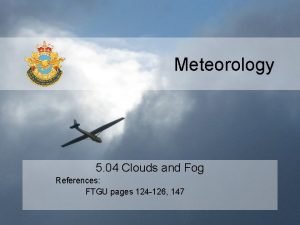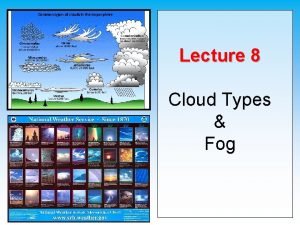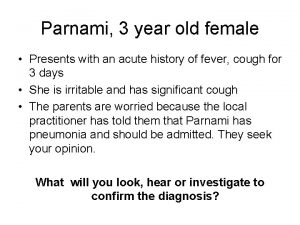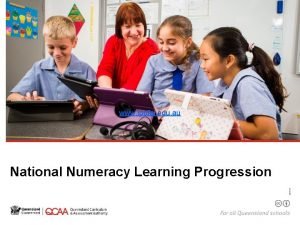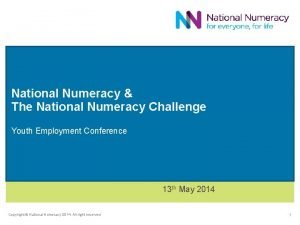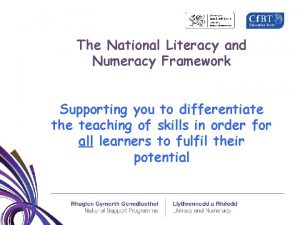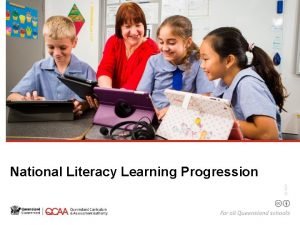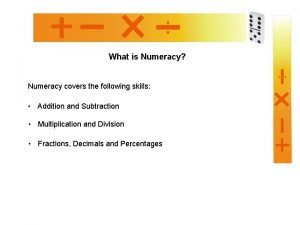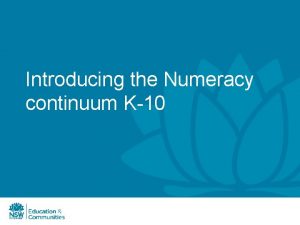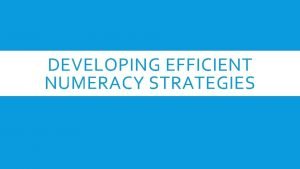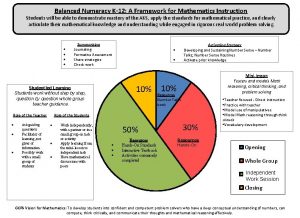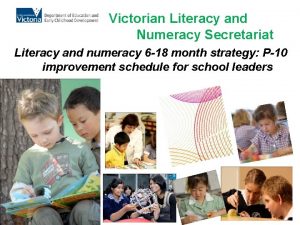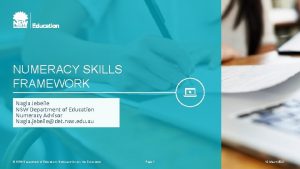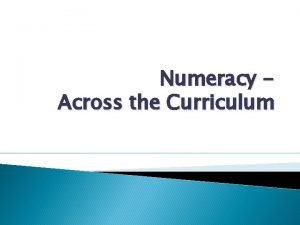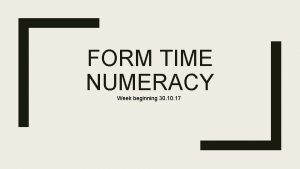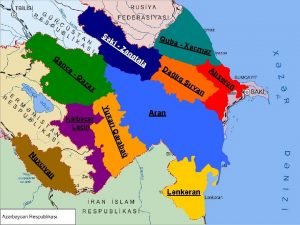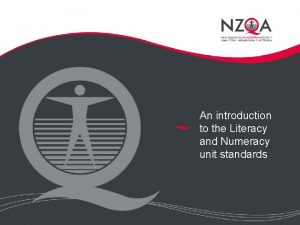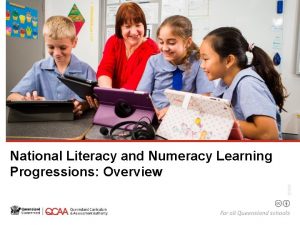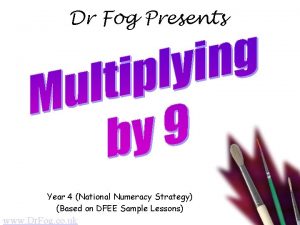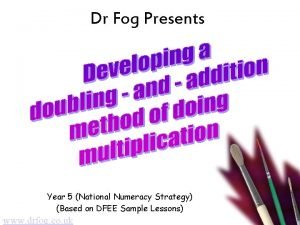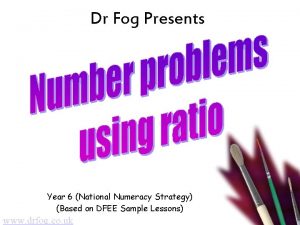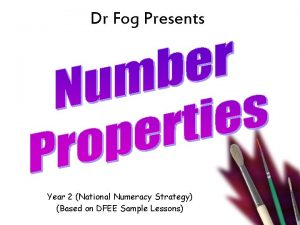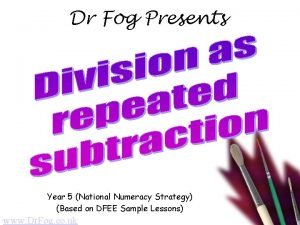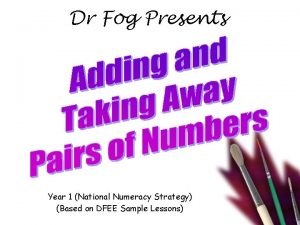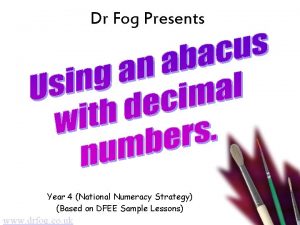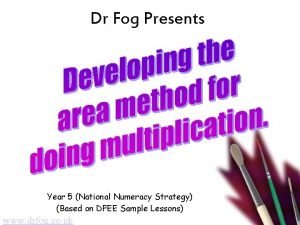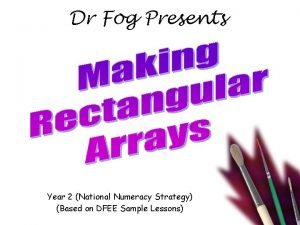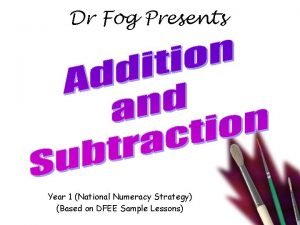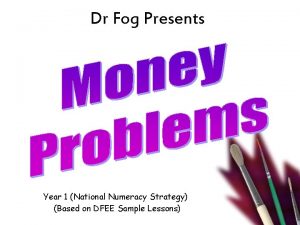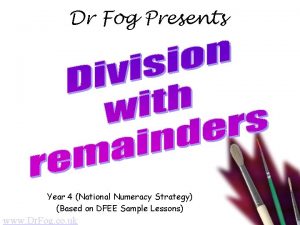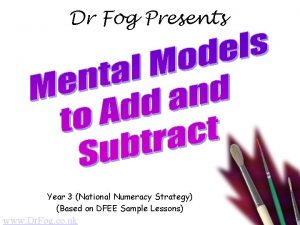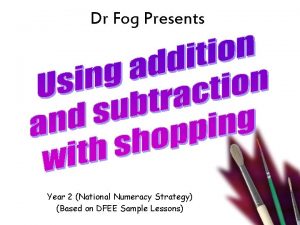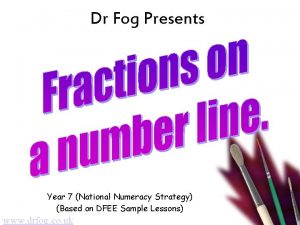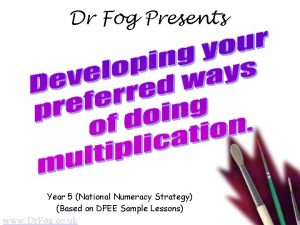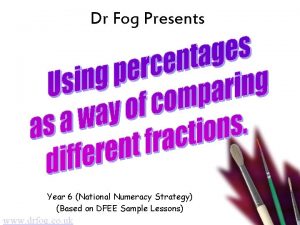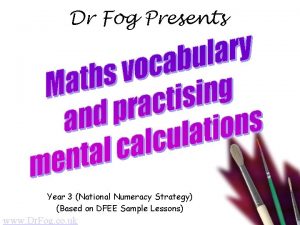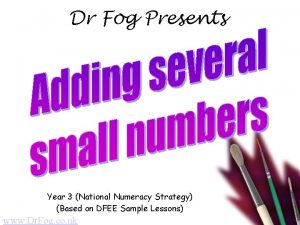Dr Fog Presents Year 6 National Numeracy Strategy






















- Slides: 22

Dr Fog Presents Year 6 (National Numeracy Strategy) (Based on DFEE Sample Lessons) www. Dr. Fog. co. uk

Resources • Calculators • Worksheet

Mental Learning Objective • Identify and use appropriate operations to solve word problems.

Mental Learning Task • Children are to work in pairs. • One child in each pair is given a calculator. • So the class now consists of two teams…

Mental Learning Task Team 1: - Team 2: -

Mental Learning Task • Call out some mental arithmetic problems, using all four rules, and tell everyone to work them out. • Mentally if they are a ‘Mind’ • On a calculator if they are a ‘Calculator’ • Hand up when you have a solution.

Mental Learning Task • Choose one pair and establish which one of them put their hand up first. • Then check they both have the same, correct answer. • Whichever child puts their hand up first wins a point for their team.

Mental Learning Task • After a while – give the calculators to your partner. • Play again. • Which team wins this time?

Mental Learning Objective • Identify and use appropriate operations to solve word problems.

Main Learning Objective • Explain methods and reasoning orally and in writing.

Key idea

Main Learning Task • Soon you will moving to secondary school. • Today we will look at a schools statistics.

Main Learning Task • Handout a copy of the worksheet. • What can you deduce or work out from this information? • Deducing means making deductions.

Main Learning Task • How would we answer each of these questions? • How many pupils are there altogether? • The ratio of boys to girls? • The class size we can expect each year. • How many lessons each class has a week? • How many lessons are there for each subject? • How many teachers will we have each year? • What our timetable will look like? • What the budget is spent on?

Main Learning Task • Now you are going to do some of your own deductions. • Find out the answers to some of the questions posed by the class.

Main Learning Task • Simplification: • Answer these questions. • How many pupils are in each year? • How many pupils in the whole school? • Are there more girls than boys in the school? • Are there more girls than boys in each year?

Main Learning Task • Challenge : • Solve these problems. • In year 7 students take 14 subjects but don’t have the same number of lessons of each. • They have 4 lessons a week in each of Mathematics, English and Science. • Suggest a timetable so that in the 30 periods all the subjects have at least one lesson a week. • Find the ratio of boys to girls in each year.

Main Learning Objective • Explain methods and reasoning orally and in writing.

Plenary • Has anyone finished their task? • What did you find out? • How could you present this information for others to use and read?

Review of Key Idea • I can clearly present information and solve problems appropriately. • Did you learn this in today’s lesson?

Worksheet Blaise Secondary School Year Group Number of boys Number of girls Number of periods taught per week Year 7 101 107 249 Year 8 99 96 254 Year 9 78 76 250 Year 10 81 83 219 Year 11 90 97 220 Year 12 67 58 257 • Key Stage 3 students have 14 subjects: English, Mathematics, Science, Technology, History, Geography, Religious Education, Art, Drama, Music, French, German, PE, and PSHE (Personal and social education. • No class has more than 30 pupils. • There are 30 periods a week. • There are 62 members of staff. • The total budget for the school is £ 2 374 240. • Year 7 pupils come from 5 different primary schools.

Where Can I Find More Resources Like This? • You can now visit my teaching resource website at http: //www. Dr. Fog. co. uk • You can click here to search for more of my teaching resources. • Click here to visit my TES shop!
 Advection fog vs radiation fog
Advection fog vs radiation fog Advection fog
Advection fog Advection fog vs radiation fog
Advection fog vs radiation fog A 26 year old female presents
A 26 year old female presents Chapter 17 neurologic emergencies
Chapter 17 neurologic emergencies Acara numeracy continuum
Acara numeracy continuum National numeracy challenge
National numeracy challenge National literacy framework
National literacy framework Acara literacy learning continuum
Acara literacy learning continuum Leavers assembly poem
Leavers assembly poem What numeracy covers
What numeracy covers Numeracy learning continuum
Numeracy learning continuum Facile stage of numeracy
Facile stage of numeracy Balanced numeracy
Balanced numeracy Literacy and numeracy secretariat
Literacy and numeracy secretariat Numeracy skills framework
Numeracy skills framework Numeracy across the curriculum audit
Numeracy across the curriculum audit Grade 10 numeracy assessment practice test
Grade 10 numeracy assessment practice test Form time numeracy
Form time numeracy Scottish survey of literacy and numeracy
Scottish survey of literacy and numeracy Ki g
Ki g Unit standard 26622
Unit standard 26622 Literacy and numeracy progressions
Literacy and numeracy progressions
